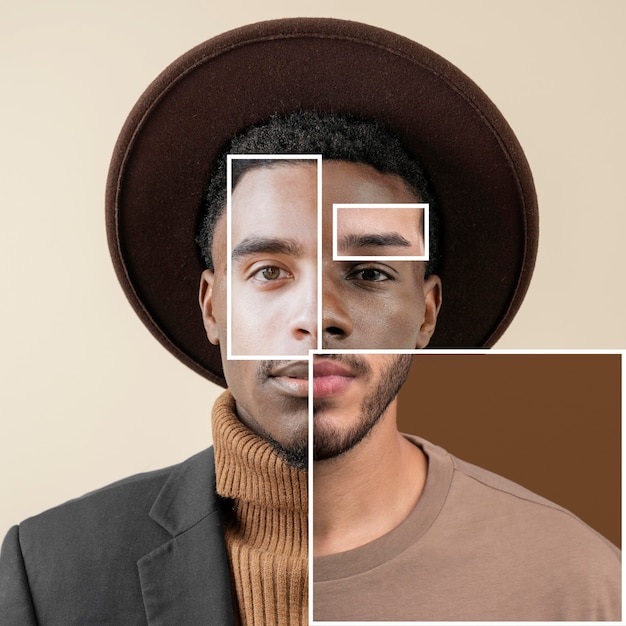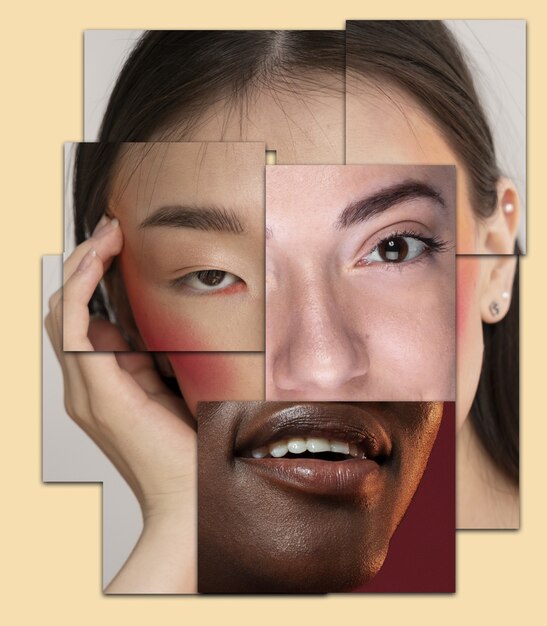Retouching portraits in Photoshop can seem daunting, but with a little patience and the right techniques, you can achieve professional-looking results. This step-by-step guide will walk you through the process, from basic adjustments to more advanced techniques, helping you master the art of portrait retouching in Photoshop. Whether you’re a beginner or have some experience, this guide offers valuable insights and practical tips.
Section 1: Prepping Your Image for Retouching
Importing and Analyzing Your Image
Before diving into retouching portraits, it’s crucial to import your image into Photoshop correctly and analyze it for potential areas of improvement. Choose a high-resolution image for optimal results. Look for blemishes, uneven skin tones, distracting background elements, and any other imperfections you’d like to address. This initial assessment will guide your retouching process.
Taking a moment to analyze your image allows you to develop a plan of action. Consider the overall mood and style you want to achieve. Do you want a natural look or a more polished, glamorous finish? This A Step-by-Step Guide to Retouching Portraits in Photoshop will help you achieve either.
Setting Up Your Workspace
Organize your Photoshop workspace for efficiency. Use layers to keep your adjustments non-destructive. This allows you to experiment without permanently altering the original image. Create separate layers for each retouching step, such as skin smoothing, blemish removal, and color correction.
A well-organized workspace can significantly improve your workflow. Keep your tools readily accessible and utilize Photoshop’s customizable panels to suit your preferences. This will streamline the retouching process and make it more enjoyable. This A Step-by-Step Guide to Retouching Portraits in Photoshop will help you make the most of Photoshop’s powerful tools.
Section 2: Core Retouching Techniques
Skin Smoothing and Blemish Removal
Skin smoothing is a key element of portrait retouching. Use the Healing Brush or Spot Healing Brush tool to remove blemishes, scars, and other imperfections. Work with a light touch to maintain a natural skin texture. Avoid over-smoothing, which can result in a plastic, artificial look.
Remember, the goal is to enhance, not erase, the natural beauty of the skin. Preserve pores and fine lines for a realistic result. This A Step-by-Step Guide to Retouching Portraits in Photoshop emphasizes a balanced approach to retouching.
Correcting Skin Tone and Color
Adjusting skin tone and color can significantly improve the overall appearance of a portrait. Use the Curves or Levels adjustment layers to fine-tune brightness and contrast. Address any color casts or imbalances using the Color Balance tool.
Achieving a natural and pleasing skin tone is essential for a successful portrait. Pay attention to the subtle variations in color and tone across the face. This A Step-by-Step Guide to Retouching Portraits in Photoshop provides the techniques you need to achieve professional-looking results.
Enhancing Eyes and Lips
The eyes and lips are often the focal points of a portrait. Use the Dodge and Burn tools to subtly brighten the eyes and enhance the shape of the lips. Sharpening the eyes can add a touch of sparkle and bring the portrait to life.
Be mindful not to overdo these enhancements. Subtlety is key to maintaining a natural and believable appearance. This A Step-by-Step Guide to Retouching Portraits in Photoshop will guide you through the process.
Section 3: Advanced Retouching and Finishing Touches
Dodging and Burning for Depth and Dimension
Dodging and burning are powerful techniques for adding depth and dimension to a portrait. Use the Dodge tool to brighten highlights and the Burn tool to darken shadows. This creates a more three-dimensional and visually appealing image.
Mastering dodging and burning can elevate your retouching skills to the next level. These techniques allow you to sculpt the light and shadow, adding depth and drama to your portraits. This A Step-by-Step Guide to Retouching Portraits in Photoshop covers these essential techniques.
Sharpening for Crispness and Detail
Sharpening is the final step in the retouching process. Use the Unsharp Mask filter or the High Pass filter to enhance details and create a crisp, polished look. Be careful not to over-sharpen, as this can introduce unwanted noise and artifacts.
Subtle sharpening can make a significant difference in the overall quality of your portrait. It brings out the details and adds a professional touch. This A Step-by-Step Guide to Retouching Portraits in Photoshop provides the guidance you need.
Saving and Exporting Your Retouched Image
Once you’re satisfied with your retouching work, it’s important to save your image correctly. Save a master copy in Photoshop’s native PSD format to preserve your layers. Export a separate copy in a suitable format, such as JPEG or TIFF, for sharing or printing.
Section 4: Tool Summary
| Tool | Description |
|---|---|
| Healing Brush | Repairs blemishes and imperfections by blending surrounding textures. |
| Spot Healing Brush | Quickly removes blemishes with minimal user input. |
| Clone Stamp Tool | Copies pixels from one area to another. |
| Patch Tool | Replaces a selected area with pixels from another area. |
| Curves Adjustment | Adjusts brightness and contrast. |
| Levels Adjustment | Adjusts tonal range and color balance. |
| Dodge Tool | Lightens areas of an image. |
| Burn Tool | Darkens areas of an image. |
| Unsharp Mask Filter | Sharpens an image by increasing contrast along edges. |
Conclusion
This step-by-step guide has provided you with a comprehensive overview of portrait retouching in Photoshop. By following these techniques, you can enhance your portraits and achieve professional-looking results. Ready to explore more Photoshop magic? Check out our other articles on advanced compositing techniques and creative photo manipulation.
FAQ about A Step-by-Step Guide to Retouching Portraits in Photoshop
What is portrait retouching?
Portrait retouching is the process of digitally enhancing a photograph of a person to improve its overall appearance. This can involve anything from removing blemishes and wrinkles to adjusting lighting and colors.
What software do I need for portrait retouching?
Adobe Photoshop is the industry standard, but other software like GIMP (free) and Affinity Photo can also be used.
What are the basic steps in retouching a portrait?
Generally, it involves: 1. Cleaning up blemishes and imperfections. 2. Smoothing skin. 3. Adjusting lighting and contrast. 4. Enhancing eyes and other features. 5. Color correction.
How do I remove blemishes in Photoshop?
Tools like the Spot Healing Brush, Healing Brush, and Clone Stamp Tool are commonly used to remove blemishes, acne, and other imperfections.
What’s the difference between the Spot Healing Brush and the Healing Brush?
The Spot Healing Brush automatically samples the surrounding area to blend the blemish away, while the Healing Brush requires you to manually select a source area for the blend.
How can I smooth skin without making it look unnatural?
Use techniques like frequency separation or the Surface Blur filter sparingly. Avoid overdoing it, as it can lead to a “plastic” look.
How do I enhance eyes in a portrait?
You can subtly brighten the whites of the eyes, sharpen the iris, and even enhance eyelashes using tools like the Dodge and Burn tools or adjustment layers.
What is frequency separation?
It’s a technique that separates the texture (high frequency) from the color and tone (low frequency) of an image, allowing you to edit each independently for more precise retouching.
What file format should I save my retouched portraits in?
Saving as a PSD (Photoshop Document) preserves layers for future edits. For sharing or printing, JPEG is commonly used. TIFF is another good option for high-quality output.
Are there any online resources for learning more about portrait retouching?
Yes! Numerous tutorials, videos, and online courses are available on platforms like YouTube, Skillshare, and Photoshop Training Channel.





